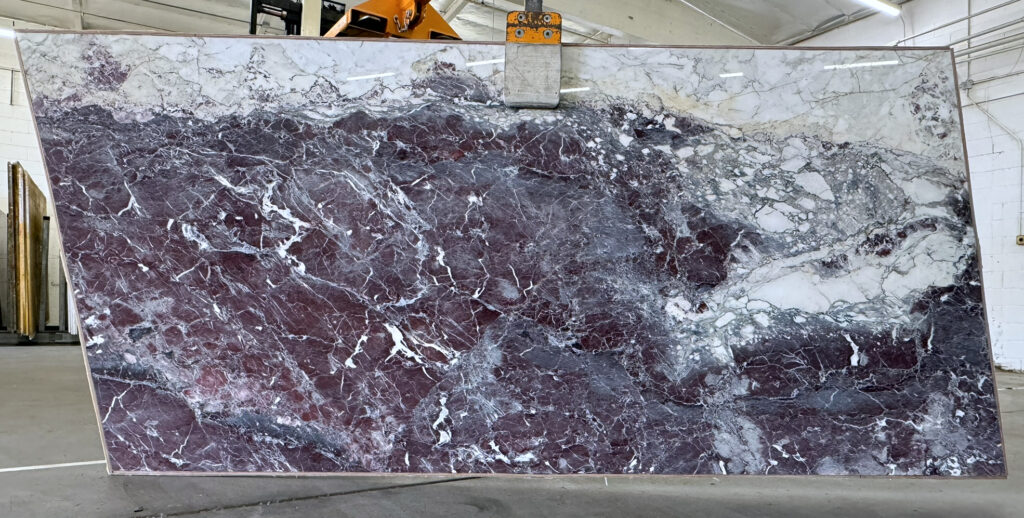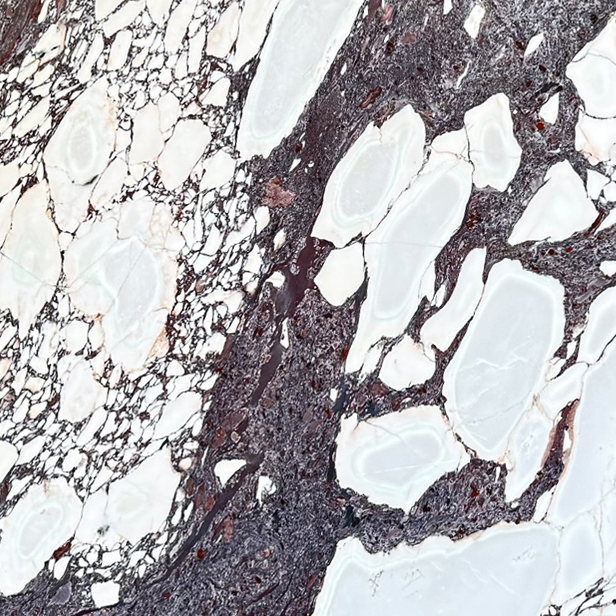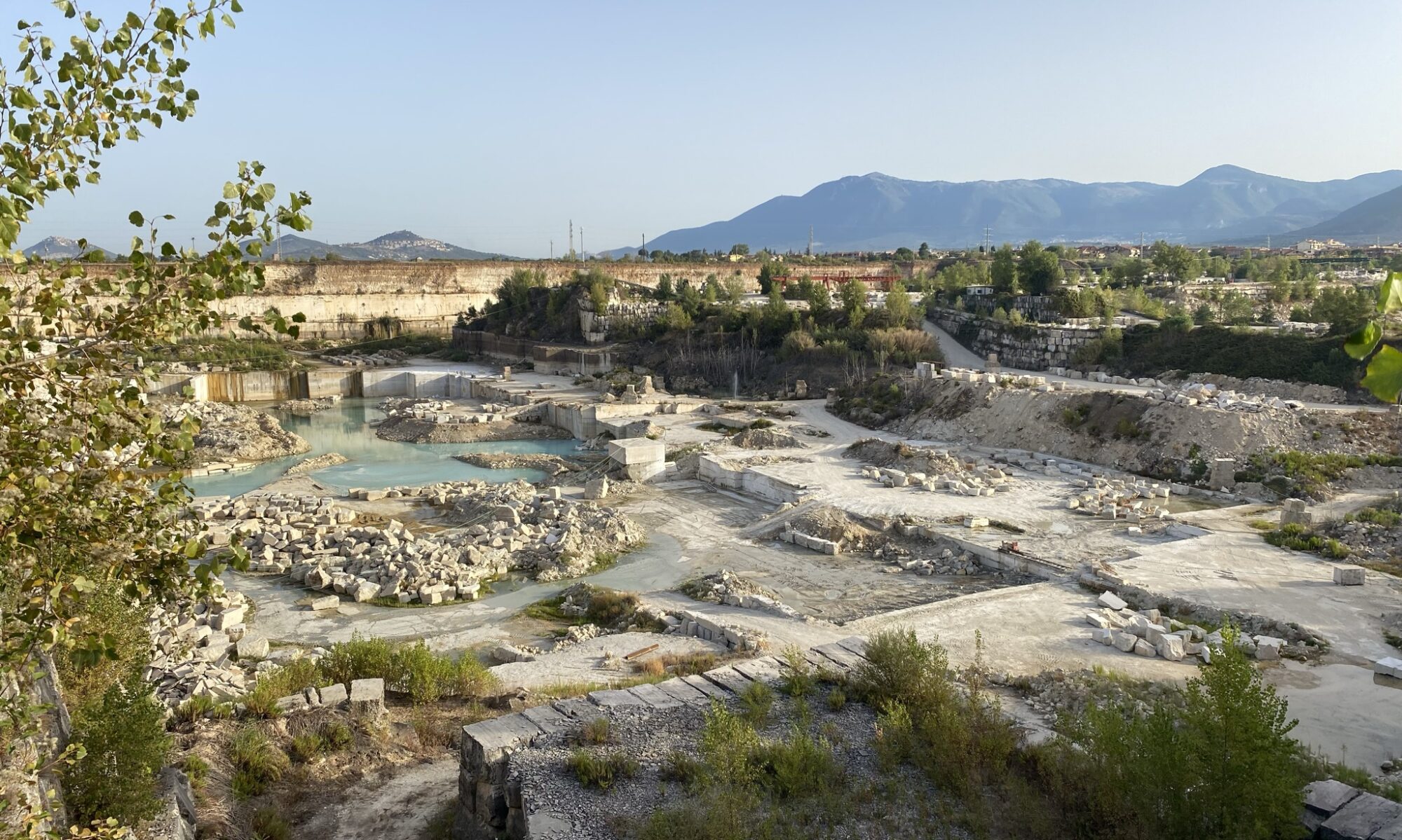Fior di Pesco, aka Fior di Paonazzo marble, originating from Italy, is a unique and highly prized variety known for its distinctive coloration and patterning.

Appearance:
- Base Color: The base of Fior di Paonazzo typically ranges from a deep, rich purple to a lighter lilac hue, which gives it its name “Paonazzo,” meaning purplish-red in Italian.
- Veining and Flecks: This marble is characterized by intricate veining that often appears in white, gold, or silver, creating a dramatic contrast against the purple background. These veins can form swirling, flower-like patterns, hence “Fior di” translating to “flower of.”
- Texture: The surface, when polished, can achieve a high gloss finish, making the colors and veins stand out vividly. However, it can also be honed for a more muted, elegant look.
Origin:
- Quarries: Primarily sourced from quarries in Tuscany, particularly around the Carrara and Massa areas, known worldwide for their high-quality marble.
Characteristics:
- Durability: Fior di Paonazzo is generally durable, suitable for both indoor and outdoor applications, though it requires proper sealing to protect from staining due to its porosity.
- Density: It has a medium to fine grain, providing a smooth finish once polished.
Applications:
- Luxury Interiors: Commonly used for countertops, wall claddings, and flooring in high-end residential and commercial spaces where its unique color can become a focal point.
- Art and Sculpture: Historically and contemporarily, this marble has been favored by sculptors for its workability and aesthetic qualities.
- Jewelry and Decor: Smaller slabs or pieces might be crafted into decorative items or even used in high-end jewelry.
Cultural Significance:
- The use of Fior di Paonazzo marble can be traced back through centuries, often associated with nobility and grandeur. Its rarity and the labor-intensive process of extraction and polishing add to its value.
Fior di Paonazzo marble slabs are not just building materials but are considered works of natural art, each slab unique due to the marble’s organic formation process. They bring a touch of timeless elegance and a connection to Italy’s rich history in stonework.




